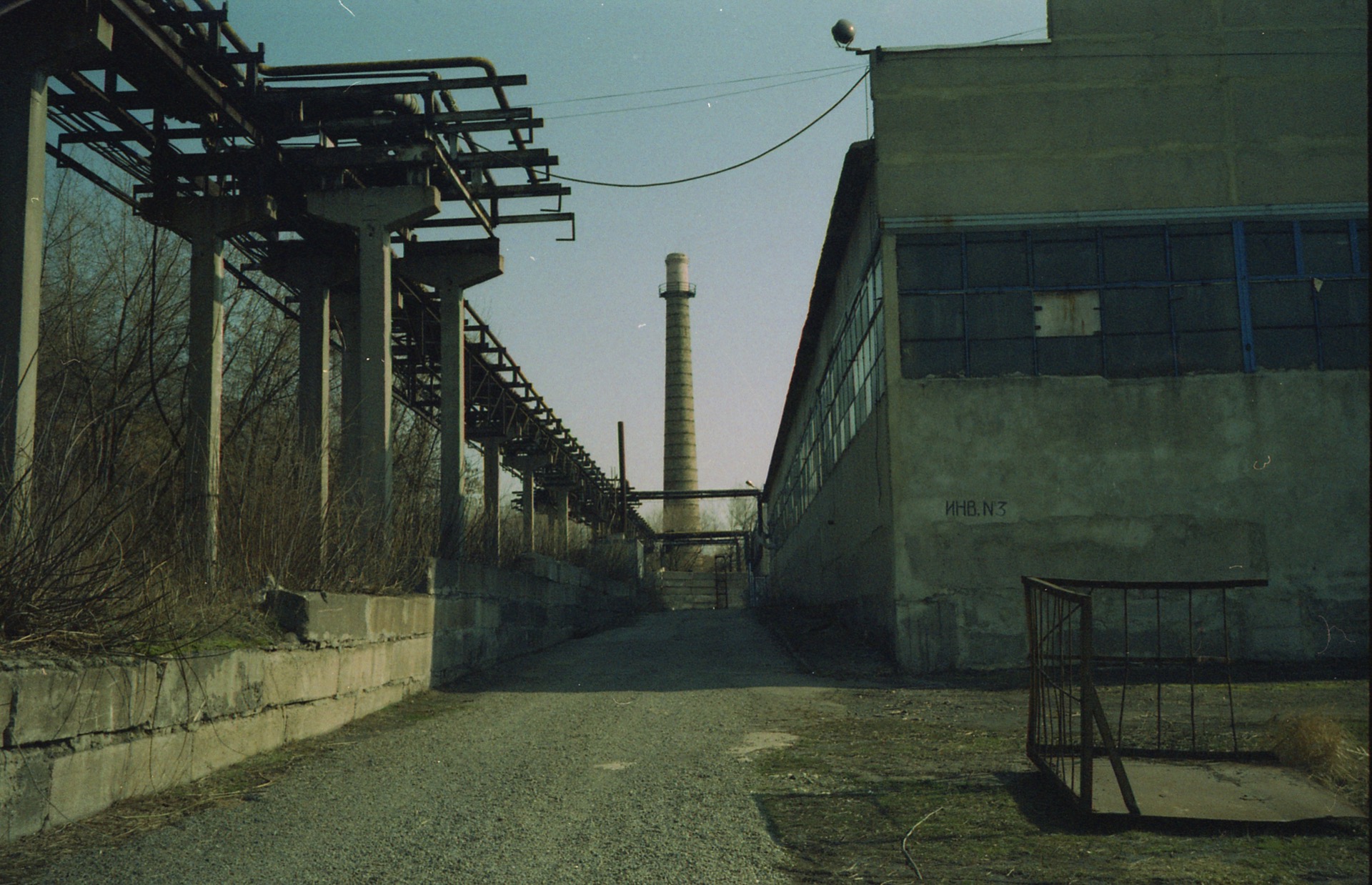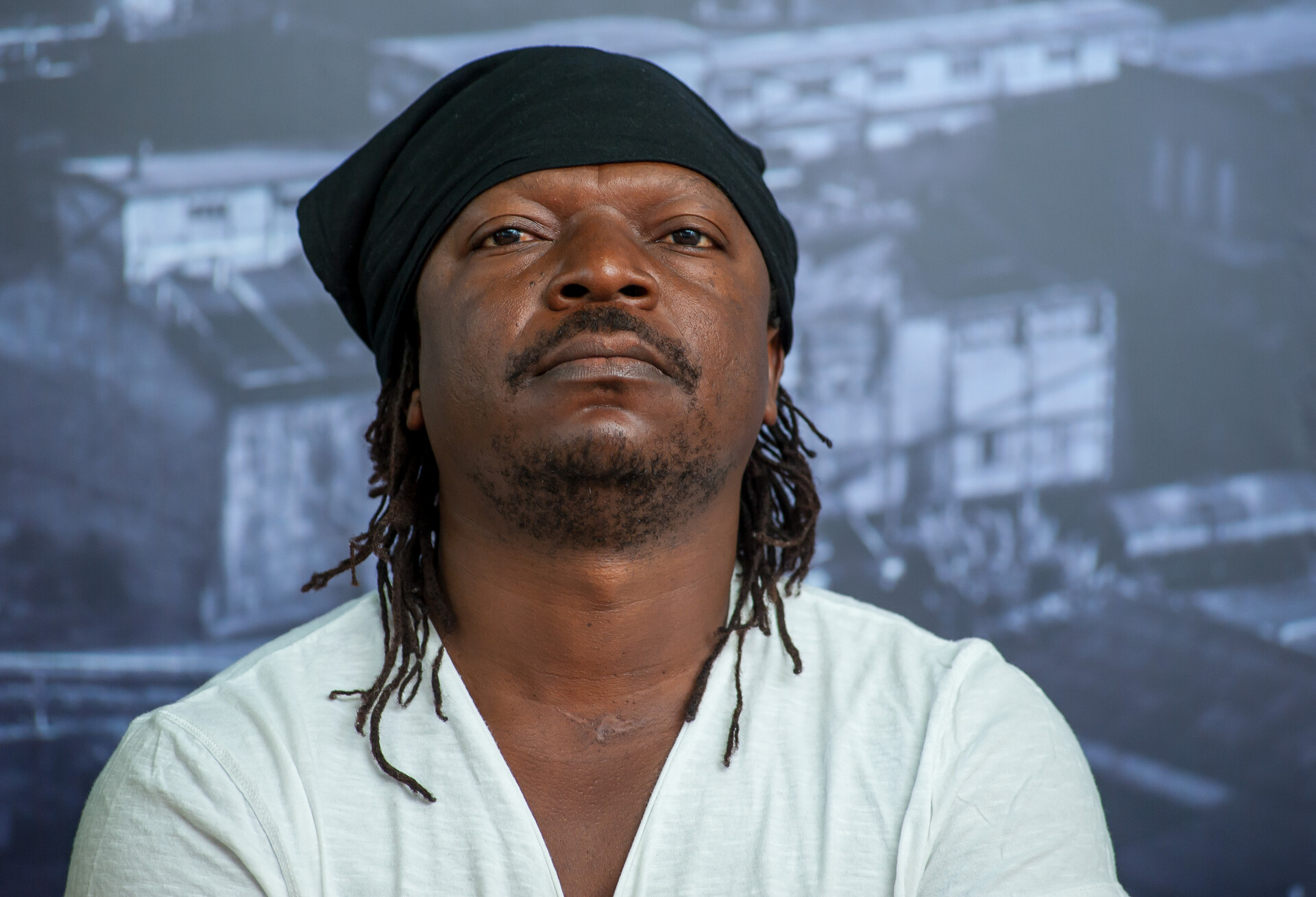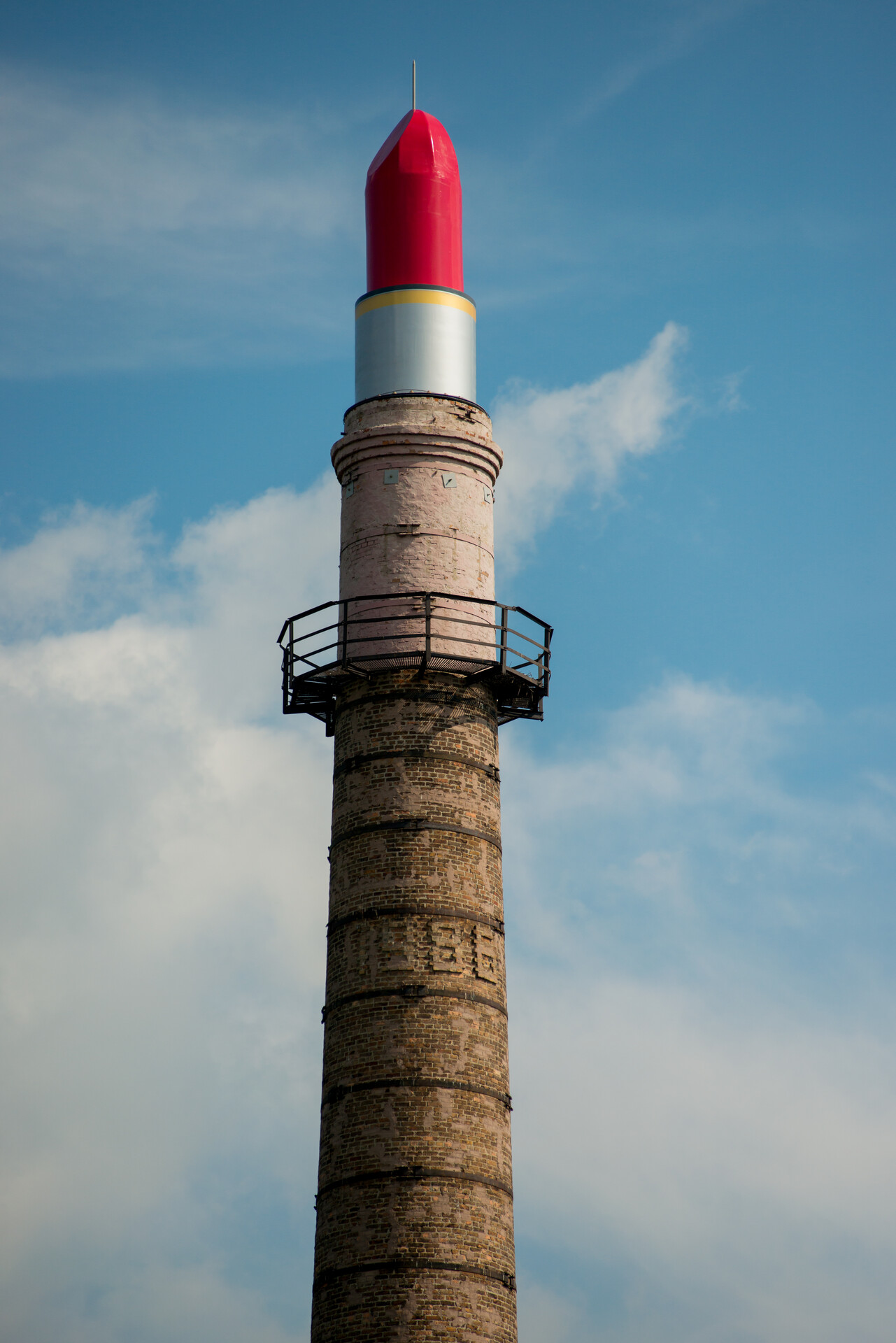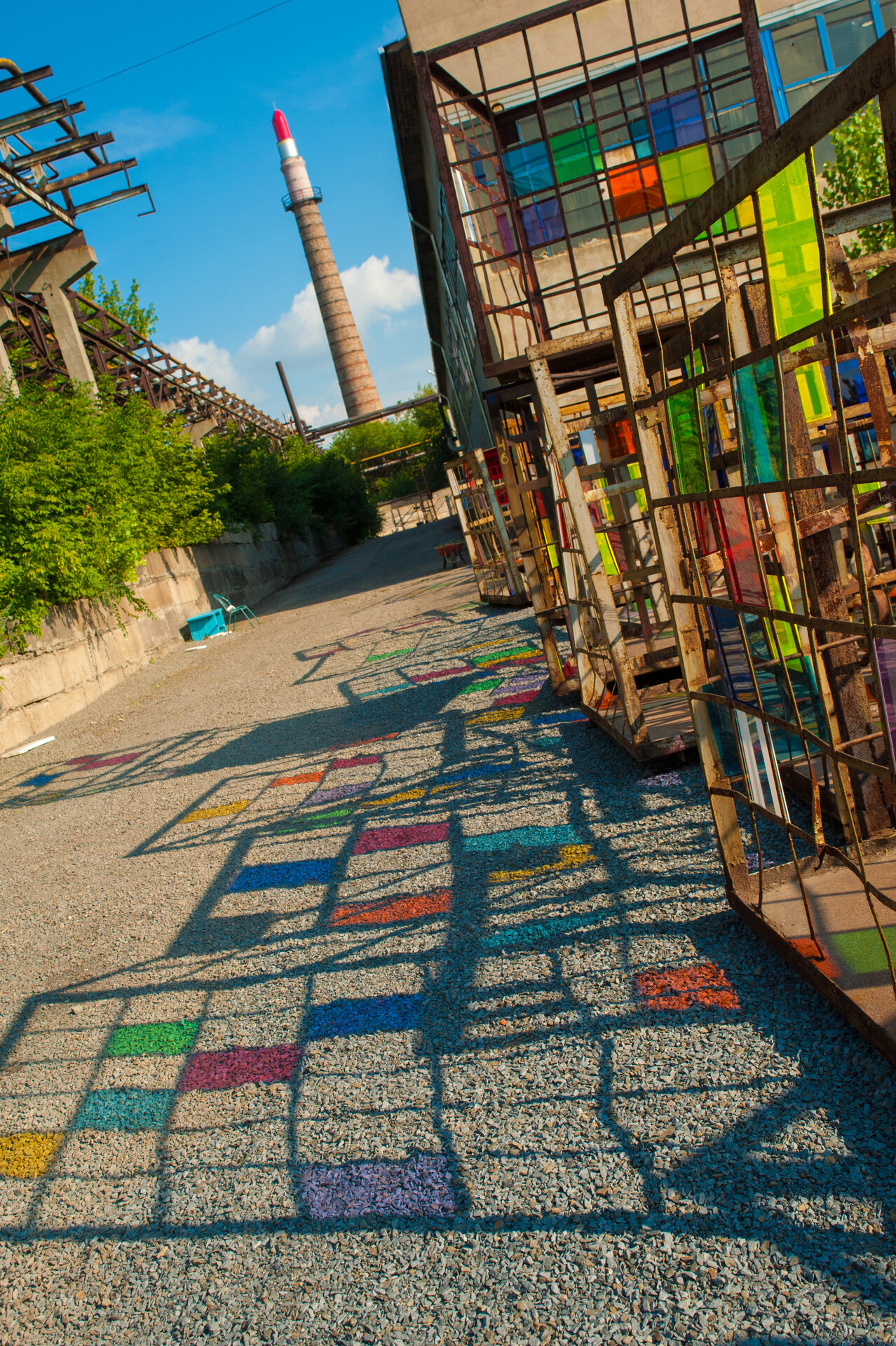Time periods
1. Factory
Plant (1955 — 2005) this section depicts usage of selected space by the former insulation materials plant. The plant was opened in 1955 in the city of Donetsk. The company produced mineral wool and other insulation materials for power stations and military and astronautical applications. The plant’s products were exported to the republics of the USSR and European countries, and around 1000 workers and engineers were employed at the company. In 2005 the plant went bankrupt because of the railway line being closed, and its premises began to be used as warehouses.
2. Culture
‘Izolyatsia’ foundation (2010 — 2014) this section depicts how the space was used by the international charitable foundation ‘Izolyatsia’. In 2010, Donetsk activists opened a platform for cultural initiatives with the support of local business, using the legacy of the factory as a source of inspiration and material for creating new ideas. The Foundation used the plant premises to realise educational, cultural and art projects, to create new enterprises in the creative economy, and to stage concerts, theatre performances and cinema viewings. Both artists and cultural actors on a Ukrainian and global level and the local community were actively involved in ‘Izolyatsia’s work.
3. Prison
‘Izolyatsia’ illegal prison (2014 - ...) this section shows the space during the operation of the illegal prison and military base that representatives of Russian Federation armed units set up on the site of the plant and cultural foundation. Buildings which were earlier used for cultural events and art projects are now a place of illegal imprisonment, torture, execution by firing squad and used for the storage of ammunition, weapons and military equipment. According to the testimony of former prisoners, the hostages are kept in inhumane conditions, made to do forced labour and undergo moral and physical abuse.
Make up... Peace!
Factory

This chimney was taller than the rest of the plant buildings. The furnace room used gas for heating, which was almost free in the USSR. In such a way there was almost no thermal insulation in the plant, and in order to support working temperatures on the site’s premises they ran the furnace at full capacity.
After the plant’s closure using the furnace became untenable, and the heating disappeared. During the first year of their work the Foundation team had a ‘break’ for the winter festivities and worked from home.
In 2012 a new heating system for the Foundation’s buildings was installed, which was more energy-efficient and allowed the buildings to be used in winter.
‘Izolyatsia’ Foundation

In 2012 the ‘Izolyatsia’ Foundation began the group art project Where is the Time? alongside the Italian Galleria Continua. Six artists were invited to participate, who researched the interaction of the experience of the artist with the former industrial site. Among the invited artists were Pascale Marthine Tayou, from Cameroon, who investigates post-colonial culture, globalisation and other problems of modernity. He created the ‘Lipstick’, one of the most recognisable symbols of the ‘Izolyatsia’ Foundation.

In order to develop the concept, the artist researched the local context and spoke to residents of Donetsk. Pascale was touched by the story of the city’s restoration after the Second World War. The city suffered greatly from bombings, and after the German occupation the main role in the reconstruction of Donetsk and the creation of new factories was played by women. Tayou decided to honour the feats of Ukrainian women and created the installation Make up…Peace!, a 5-metre tube of lipstick which was installed on the furnace chimney.
Commenting on the installation, Pascale Marthine Tayou said, “I wanted to create my own symbol of love and hope, because, from my point of view, Donetsk is not just a city of mines and scrap metal, but also an island of dreams, willing to share its hidden treasures”.
The installation became a topic of discussion, as well as a Donetsk landmark, which could be seen from anywhere in the city.

Prison
In 2015 it became known that the ‘Lipstick’ on the ‘Izolyatsia’ Foundation’s site had disappeared. Members of staff at the Foundation called for people who had remained in Donetsk to send them photos of the chimney without the ‘Lipstick’.
Several days later a video of the work being destroyed was found on the Russian social network VKontakte. The video was quickly deleted, but journalists managed to make a copy. In the video one can see the representatives of the Russia-backed illegal armed formations blowing up the ‘Lipstick’ with the words ‘these are the red hat’s last days’.
Leonid Baranov, representative of the so-called special committee of the Russian occupation administration in the temporarily Russian-occupied territory of Ukraine in the Donetsk region, made the following statement about the ‘Izolyatsia’ Foundation : “They say that it was a centre of what was supposedly global art. It could not be allowed to operate. Because the art that they disseminated is not art. On the territory of the Donetsk Republic such art will be punished.”
It is unknown whether the destruction of the ‘Lipstick’ was the punishment. Perhaps the representatives of the Russia-backed illegal armed formations did not like the object because it allowed to determine the location of the the ‘Izolyatsia’ illegal prison easily. It is possible that the reason for its destruction was a desire to earn money by selling the metal.
The global artistic community and human rights activists condemned the destruction of the ‘Lipstick’ and other works, comparing them with the acts of destruction of cultural heritage by ISIL terrorists.
Pascale Marthine Thayou said this about the destruction of his installation: “I laughed, and then I was lost for words and stupefied. I do not know what moves them if they see perversion in this. And in my heart, there is no place for hate.”


